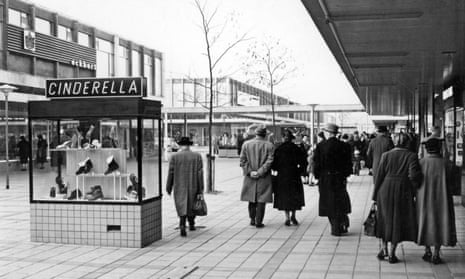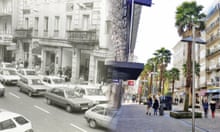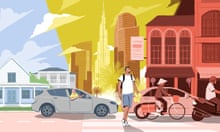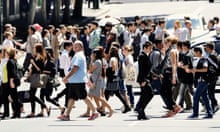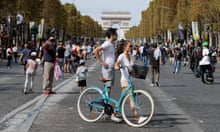A decade after the historic centre of Rotterdam was largely destroyed by bombing during the German invasion of the Netherlands in May 1940, the city set about building a replacement.
The old centre had its faults: narrow streets, alleys and canals that hindered the passage of traffic. The postwar city council seized the opportunity to build a modern centre and straighten the street pattern. The idea was to give Rotterdammers “what they had, but improved and refined”, according to the architect Jo van den Broek, who embodied the optimistic spirit that ruled Rotterdam at the time.
When it opened in 1953, the Lijnbaan was the first purpose-built pedestrian street in Europe. It was a completely car-free zone – unheard of at the time.
“It was a pretty audacious concept,” says the architect Frans Hooykaas. “Initially, many shopkeepers didn’t want a business there, because they thought customers would avoid an area they couldn’t reach by car.”
He was 14 when the Lijnbaan opened and later worked for 29 years for the architectural firm that designed it: Van den Broek en Bakema, the most famous modern Dutch architects at the time.
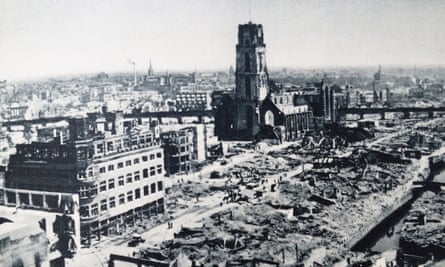
In spite of the shopkeepers’ fears, the Lijnbaan proved a great success. It became a popular area not only for shopping but also for recreation. People came to take a stroll, gaze at the luxurious shop windows or sit on a terrace to watch the crowd and meet friends.
“The Lijnbaan became a living room for the city,” says the architectural historian Astrid Aarsen, who lived for five years on the Lijnbaan and wrote a book on its history called 60 Years of Lijnbaan: the Heart of the Rotterdam Reconstruction. “The absence of traffic created an atmosphere of safety and relaxation.
Q&AWhat is Walking the City week?
Show
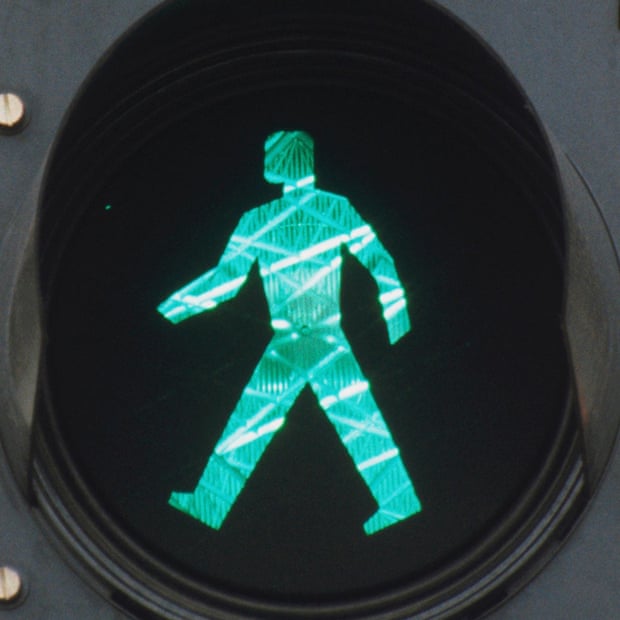
As cities around the world close central streets to cars to mark World Car-Free Day, Guardian Cities is looking at the joys and trials of urban walking.
The US humourist and writer David Sedaris tells us about walking in cities from Raleigh to Reykjavik. Will Self explains what he learns from perambulations in London, there’s Fran Lebowitz in New York, Helen Garner in Melbourne, “natural navigator” Tristan Gooley in Portsmouth, and writers on Delhi and Newcastle, Cairo and Wellington.
Laura Laker casts a critical eye on the performance of Vision Zero, the global city scheme to eliminate traffic deaths. London has signed up – will it enjoy the success of New York, or the delays of LA? The recent blocking of Sadiq Khan’s plans to pedestrianise Oxford Street does not bode well.
Correspondent Stephen Burgen samples the newfound silence in the Spanish car-free city of Pontevedra, and Matthew Keegan discovers what prompted Hong Kong to reopen a popular pedestrian street to vehicles.
Renate van der Zee looks at the rise, fall and rebirth of the Lijnbaan in Rotterdam – Europe’s first pedestrianised street – while Rachel Aldred at the University of Westminster crunches the numbers to identify the most dangerous London boroughs for people on foot.
Oliver Wainwright explores the City of London’s forgotten Pedways – and asks whether these 1960s walkways can make a comeback.
We consider the phenomenon of “desire lines”, examine the art of following a stranger in the hope of seeing a city in a new light, and much more.
“The Lijnbaan was a luxurious oasis built upon an open wound. It was an optimistic gesture towards the future, it expressed the hope for a better life after the war. People used to put on their best clothes when they went there.”
At the time, a stroll down the Lijnbaan was an exceptional experience. There was a range of about 70 high-quality shops and along the promenade there were flower beds, benches, statues and aviaries. Wooden canopies offered protection when it rained.
“Buses from all over the Netherlands brought throngs of people who were amazed by this new phenomenon and were very eager to shop,” says Mia Giesbers, who owned the once famous fashion store Meddens in the heart of the Lijnbaan. “It was great for us, because we would sell 35 suede jackets in the space of two hours.”
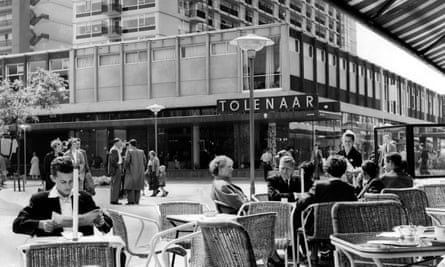
A visit from Mr Mall
The Lijnbaan attracted the attention of journalists and architects from all over the world and was copied many times. The cities of Warsaw, Prague, and Hamburg built shopping promenades inspired by the Lijnbaan and it served as an example for Stevenage, the first pedestrianised shopping centre in Britain.
Hooykaas remembers a visit from the famous Austrian architect Victor Gruen. “Gruen built many shopping malls all over the US. His nickname was Mr Mall, because he was considered the pioneer of the American shopping mall. It was a bit of a disappointment for him that we built the Lijnbaan a year before his first shopping mall opened,” he smiles.
But there was a big difference between Gruen’s projects and the Lijnbaan. Gruen mostly built his malls on the outskirts of towns, whereas the Lijnbaan became the throbbing heart of the new postwar Rotterdam. Hooykaas says: “I think that only could have happened because it was such a remarkable design.
“It was a shopping centre on a human scale that gave you the feeling that while walking down the street, you moved from room to room.”
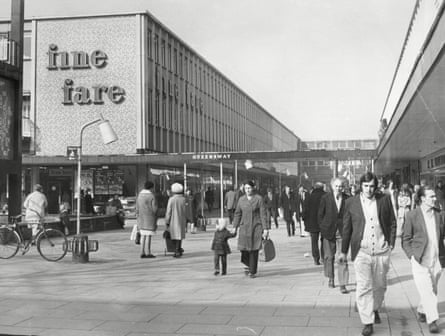
A decline took hold in the 1980s. The original shopkeepers retired or left the area, to be replaced by large chains solely intent on turnover. Where once there had been a variety of high-end shops, there was now a multitude of cheap clothing and shoe shops. It attracted a different crowd. The terraces and aviaries disappeared, and people threw rubbish in the empty flowerboxes.
At night the roller shutters went down and the Lijnbaan became a no-go area, where people were robbed and football hooligans would gather after games.
All kinds of solutions were suggested by urban planners, from demolishing part of the complex to putting a giant roof over the complete promenade. In the end not much happened. New canopies of plexiglass were installed in the 1990s, to little effect because not all shopkeepers participated.
“Nobody was interested in the Lijnbaan anymore,” Aarsen explains. “Most people regarded it as a heap of old trash”.
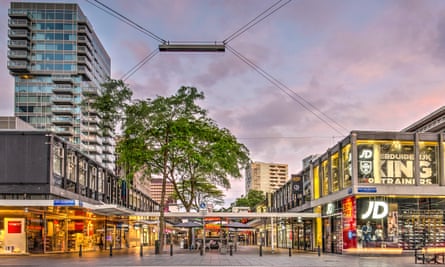
Most people, but not all. The Docomomo Foundation, which promotes architecture of the Modern Movement, saw the Lijnbaan as an innovative example of postwar architecture. Thank to its efforts, the street acquired the national heritage status in 2010. “This was a turning point,” says Aarsen.
Nowadays the Lijnbaan has resurfaced as an area were a mainly young public comes to shop and meet. The roller shutters have gone and the place feels safe again.
Large fashion and shoe chains still dominate but some of the old atmosphere is returning thanks to a project by the owners’ association to bring back the original facades.
“The Lijnbaan is a fine example of a style we call mid-century modern,” says the architect Robert Winkel. “There’s a growing appreciation for this worldwide. We are bringing back the wooden canopies and the original shopfronts.
“When you see the effect, it’s easy to understand why so many people came to marvel at the Lijnbaan in the past. The Lijnbaan always was the living room of Rotterdam and now we are giving it back to the city.”
We’re eager to hear your thoughts and experiences of walking in cities. Please share your reflections with us using this form, or on social media with the hashtag #GuardianWalking. Follow us on Facebook, on Twitter and Instagram
